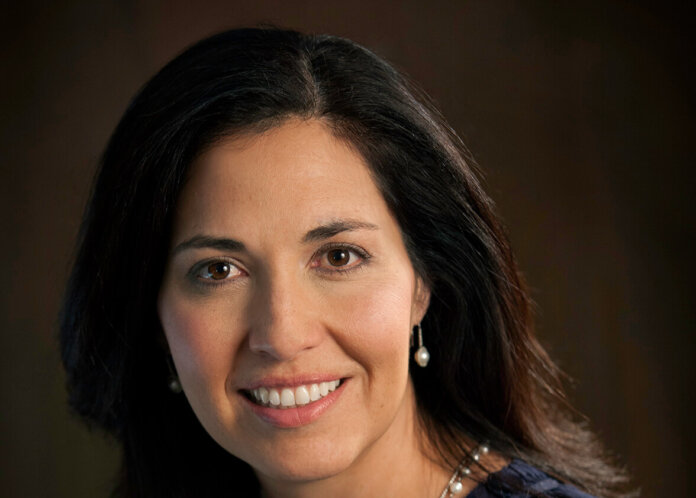PERSON OF THE WEEK: Angela Hurst is senior vice president of strategy and development for U.S. Real Estate Services (USRES), a provider of real estate service products, and RES.NET, a provider of real estate technology platforms serving the default industry.
MortgageOrb recently interviewed Hurst to get her take on how parties involved in the REO disposition and liquidation process are dealing with the reduction in REO volume; how the market has changed as a result of the most recent housing cycle; and what solutions they can use to position themselves for the future.
Q: With the declining REO market, what are some of the biggest challenges your customers face?
Hurst: Customers continually experience challenges with the unpredictability in regulatory guidelines changes while also anticipating reform – all-the-while, adjusting to changes in the real estate market.
To be successful in today’s market, it requires agility, flexibility and the ability and willingness to adjust strategy. There isn’t a one-size-fits-all approach. The needs will vary depending on the type of organization and its defined goals. As a result, it is critical for customers to maintain an open dialogue with all parties involved in the process including investors, technology providers and third party vendors.
Tactics and strategies that garnered success in previous markets may now be irrelevant and if customers don’t adjust, they may begin to experience challenges with a waterfall effect – not only with disposition of assets, but also with residual effects to vendor support.
For example, we recognized an emerging trend wherein real estate agents are being tasked with more complex and time consuming transactions, but are often receiving less compensation than traditional commissioned sales. We’ve seen this cycle before and understand that, if left unaddressed, it could become a significant hurdle to the entire industry.
Mortgage servicers depend on experienced and knowledgeable vendors, particularly specialized, licensed real estate agents, and if these specialists become burned out, we all risk an exodus of the industry altogether. This can have detrimental long-term effects.
For instance, with the ebb and flow of the market, and as the next shift upward occurs, customers will be managing portfolios with assets needing the specialized agents and vendors that today we risk edging out. To assure we all adapt to today’s demands for automation, analytics, downsizing and return on investments, we must be mindful of what tomorrow will look like. Adaptive business and marketing plans that are effective in today’s market, as well as the future, will yield the best results.
Q: What strategies/tactics are you working with your customers to implement in order to ensure success in today’s market, as well as future markets?
Hurst: Our firm caters equally to each user type, to address every customer’s individual business needs. We are continually evolving in response to broad industry trends and customer feedback, while also maintaining the flexibility to create customized solutions that serve the needs of each individual customer.
For example, we have launched several new tools and features focused around valuing properties and estimating repairs that reflect current market trends. These enable our customers to assess each asset on its individual need and also predict a more precise marketing strategy or when required, quickly pivot and adjust a strategy to meet a change in market demand or conditions. We designed these tools so that our customers can take advantage of them as their operational needs change and/or as value add tools that are affordable and do not affect the cost of the system.
Q: Are there any specific examples (integrations, technology or services) you want to highlight that have proven successful?
Hurst: As mentioned, the market is cyclical in nature and it’s important for customers to adjust their strategies accordingly. During high points, when the market is saturated with non-performing loans, the focus is to mitigate losses, and when foreclosure is imminent, to prepare to liquidate inventory to recover a loss as quickly and efficiently as possible.
However, in today’s market, customers are much more attentive toward profitability, and return on investment, due to the acquisition of portfolios. With rising interest rates, high home prices and an increase in new home sales, customers are challenged to find viable options to solve for those competing factors.
Our industry has evolved in such a manner that REO is no longer just about disposition, but focusing on each asset, individually, to determine the best strategy to maximize return. To be successful at that, a broader view and examination of the best action plan is where we have developed options for our own customers, so that they can best determine their approach.
For example, renting an asset until market conditions change is a viable solution for one asset, while renovating may be the best solution for other situations. Assisting customers with the analysis in their marketing strategy was the catalyst in our approach for integrating tools that provide the analytics behind the comparables and the construction costs, all within our operating platform. Eliminating the customer’s necessity to maintain a multitude of platforms with exterior connections, and segmented data has streamlined the approach and the return of viable information.
Many of the systems in the market today are designed to adjust to general trends, but implementation can be costly and require time-consuming development periods, which can also be prohibitive to a customer’s growth. It is critical to partner with organizations that seek out and listen to the individual needs of each customer and deploy technology that is adaptable to their specific needs.
We continually hear from our customers that the expectation on them as portfolio managers is to use and provide modernized and innovative tools to supplement the services they offer. The challenge they often have is a limited budget and a limited number of resources, which makes it difficult to support an aggressive project.
Q: You are a long-time industry veteran with more than three decades of experience in this market. How has this shaped your perspective and the work you do with customers?
Hurst: My time in the industry enables me to have a unique perspective; I have witnessed the peaks and troughs. Where I feel I can really lend my experience is in recognizing a repeated pattern, then applying that past experience when it surfaces. My mindset has been shaped by the clients I support, and I have worked with some of the most influential senior executives and thought leaders in the industry. Consulting with customers to help develop their strategic plan is one of the most valuable aspects I can bring to the table. I try to understand the unique challenges each of them possess to run their individual operations, and together we work to identify viable solutions that provide relief and yield immediate results, while also providing long-term value. Understanding both the short- and long-term goals of our customers is not just valuable, it is paramount.
Today’s demands on internal and external compliance are stronger than ever. Coupling those requirements with a rise in the “gig economy,” I have successfully partnered with our customers to implement products and services that suit a host of demands without increasing technology costs, but maintaining standards as customers hire more freelance and contract labor.
Being able to work with an experienced executive team that has instilled a level of patience and practicality that affords our staff the confidence to make well-informed decisions and solve problems. Customer feedback is the foundation and lifeline of our organization; it guides the services and tools we provide. It’s not uncommon that businesses inside and outside of technology try and sell the customer a solution they did not want or ask for, I believe it is more beneficial to everyone to create solutions they do want and need; this is very unique in today’s market.
Q: Is there any advice that you would offer your customers based on your past experiences and the cyclical nature of this industry? How can they best prepare for the future and ensure success?
Hurst: I encourage our customers to take a proactive stance, actively responding to new market conditions. Ultimately, the customer should rely on partners and technology solutions that simplify this process without full abandonment of the past.
Trends are just that, trends; and any one of us that has been around long enough has seen each of them return. Since we are in an industry that is cyclical, and we’ve seen that compliance demands, market changes, and the general economy can change quickly you need to have the ability to be responsive in real time to meet both those ever-changing requirements as well as internal needs.
A solution that is highly-configurable will prove the most beneficial and allow mortgage servicers to effectively mitigate third-party risk no matter what the future may hold.














